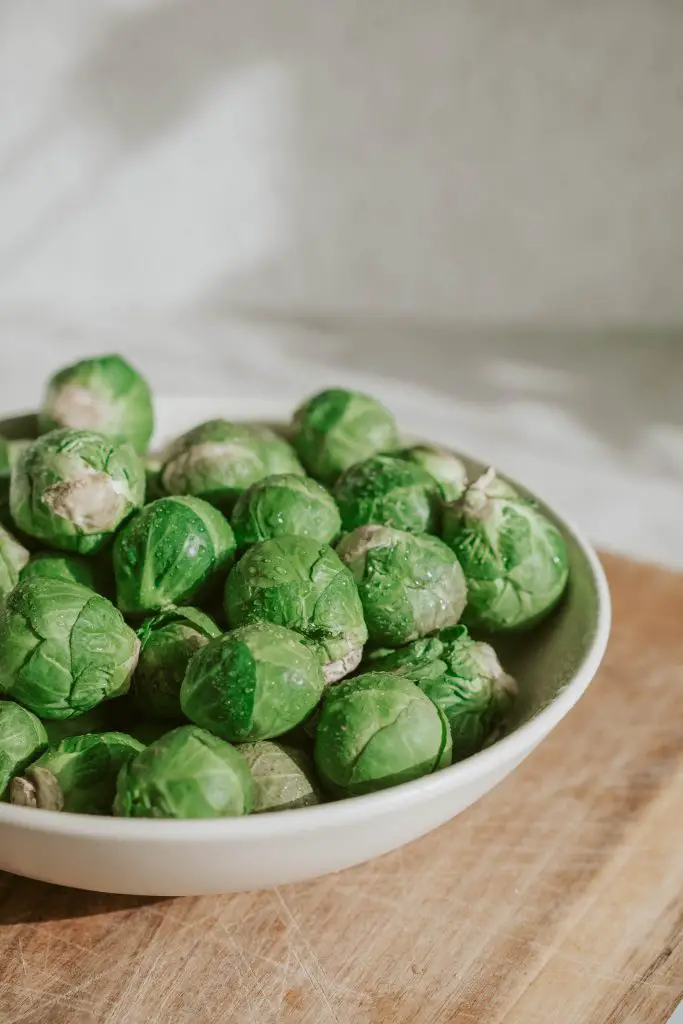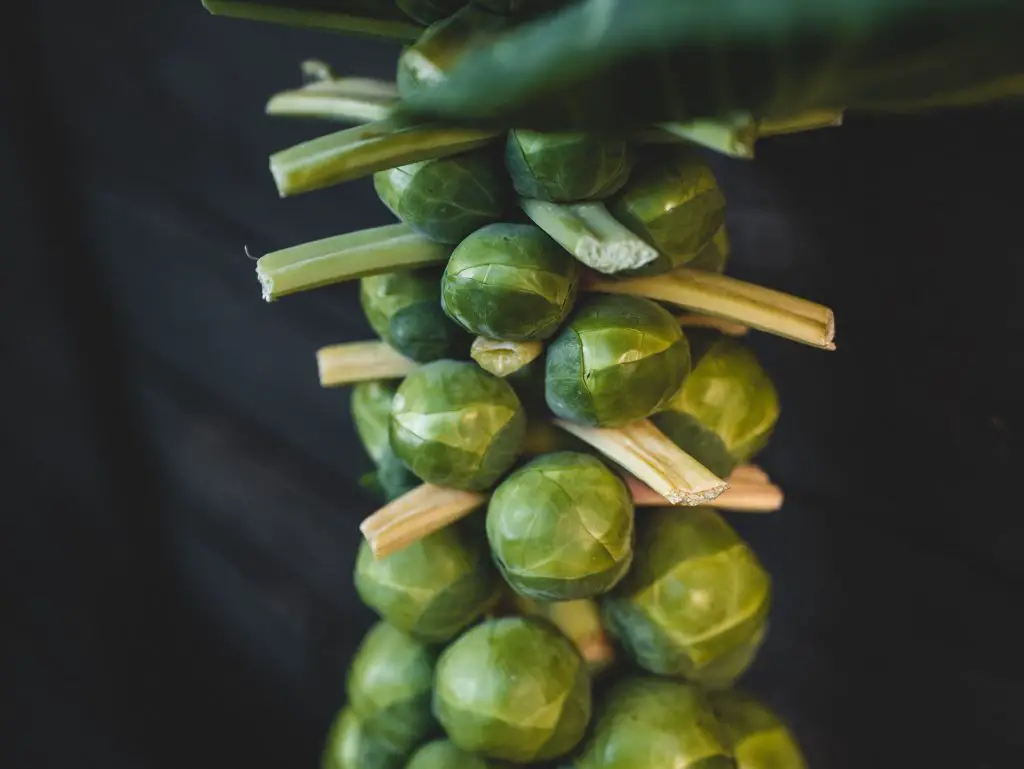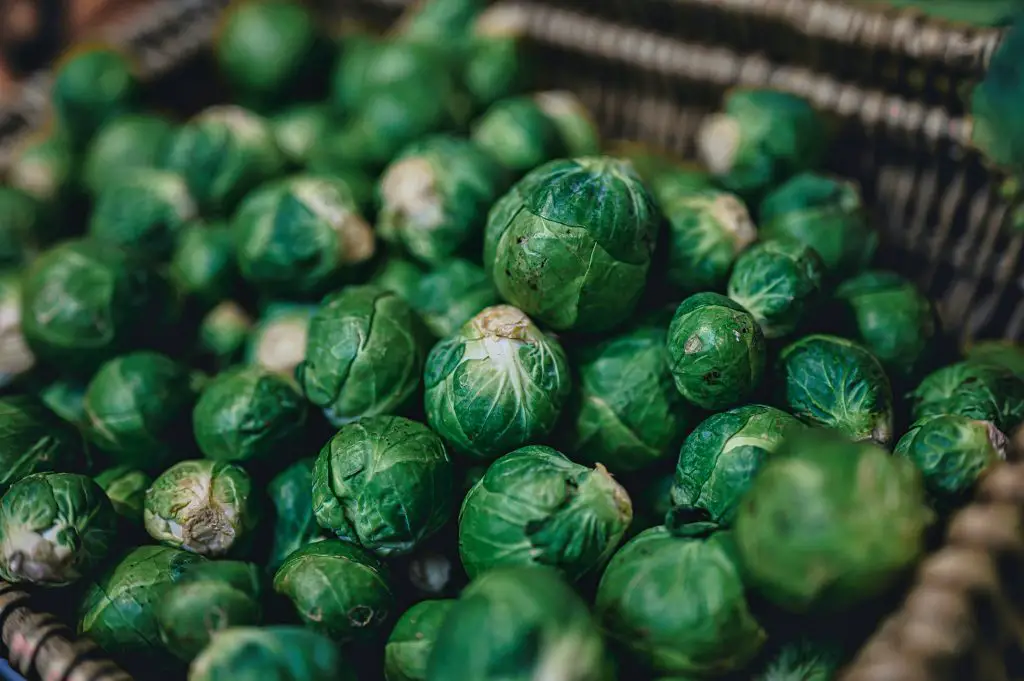How Many Brussels Sprouts Will One Plant Produce? Brussels Sprouts weren’t the most popular vegetables at the dinner table in my house, however in the last 20 years or so they have had a bit of a resurgence.
This has been in part because new varieties have been developed that have a less bitter taste, so they are becoming an option that may be worth considering for your garden. So how much does a plant produce?
A Brussels Sprout plant will typically produce between 40 and 60 heads per plant according to the Siedlce University of Natural Sciences and Humanities. This equates to a weight of around 24oz (700g) per plant but can vary depending upon the growing conditions. To produce this yield it will typically take 190 days.
The study by the Siedlce University demonstrated that the yield can be improved by increasing the space between the plants, which increases both the number of heads the plant produces and their size. Additionally, it was noted that the harvest was approximately 7 to 10 days earlier. A summary of the findings is provided in the table below.
| Area Per Plant | Number Of Heads | Weight of Heads | Total Yield |
| 0.35sqm | 46 | 9.8g | 451g |
| 0.42sqm | 55 | 12.5g | 687g |
| 0.49sqm | 63 | 13.2g | 831g |
| 0.56sqm | 63 | 14.1g | 888g |
Do You Need To Plant Brussels Sprouts Every Year?
Brussels Sprouts are a biennial plant, which means that they will survive for 2 years provided that the conditions do not get too cold. Brussel Sprouts can tolerate temperatures as low as 15°F (-9°C). In the second season, Brussels Sprouts will produce a second crop that is generally smaller than the first years’ harvest.
How To Grow Brussel Sprouts
Brussels Sprout is a member of the brassica family which includes Cauliflower, Broccoli, and Cabbage. Brussels Sprouts is a cool-weather crop that is hardy and will tolerate temperature extremes of 15°F (-9°C) as mentioned above. The ideal time to plant the vegetable is in mid-summer as this will allow time for the plant to develop sufficiently to start producing sprouts at a period when the weather has started to cool down.
Brussels Sprouts do best when the temperature is between 45°F to 70°F where the weather is warm enough to allow the plant to develop at a reasonable rate while not causing the plant to bolt. Brussels Sprouts will typically take 90 to 120 days to reach maturity when grown from seed.
Ideally, the aim is to time the sowing of seeds so that the sprouts reach maturity just as the cold weather sets in. This will allow the mature sprouts to be left on the plant throughout the winter and picked as you need them.

In regions where hard freezes occur it will be necessary to protect the plants by covering them up to the top of the plant in straw. The straw can be removed when you need to harvest the sprouts. It is important to note that when covering the plant with straw the top leaves of the plant need remain uncovered to ensure that the plant is able to photosynthesis.
Sowing Brussels Sprout Seeds
Brussels Sprout seeds can be sown directly into the soil or into modular seed trays, however, my personal preference is to sow into a tray. There are a few reasons for this which as follows;
- It is easier to control the environment. Seeds sown into the garden directly can easily dry particularly if seeds are planted in mid-summer as we recommend.
- It reduces the time that the plants spent in the ground. This is advantageous because it allows garden beds to be used for other crops while waiting for the seedlings to develop.
When planting the seeds it is advisable to put 2 to 3 seeds per cell in at a depth of around 1/4 of an inch. When deciding on the number of seeds to be sown we recommend putting in 25 to 50% more seeds than you think you will need. This will ensure that you have more than enough seedlings for your needs even if there are a few failures.
Seeds are readily available at most garden centers however, they can be purchased online from places like Seeds For Generations or St Clare Seeds in the US or Morgan and Thompson in the UK.
Once the seeds are planted it is important to ensure that they remain moist and are in a location that gets morning sun but avoids direct sunlight in the afternoon. Lack of light will cause the seedlings to become leggy and too much sun will cause the seedlings to get too hot and dry out.
Seedlings will be ready to plant out in the garden 4 to 6 weeks after they are sown. To optimize the yield they should be planted 1 to 2 ft apart in the garden in a location that gets at least 6 to 8 hrs of sun a day.

Prepare The Soil For Planting
Before planting the seedlings in the garden it is important to prepare the soil. Brussels Sprouts, like other brassicas, prefer rich soil that is well-drained and contains plenty of organic matter and is slightly acidic to neutral pH of 6.2 to 7.
To measure the pH of soil it is best to use a pH meter rather than a pH kit with strips because it is easier to use and cheaper, to check the latest price on Amazon click here.
If the pH of the soil is outside the desired range it can be adjusted by adding lime to raise the pH or sulfur to lower the pH. Any additions to the soil should be thoroughly mixed into the soil before planting. To learn more about why pH is important click here.
Once the soil is prepared and the seedlings have been planted it is important to water the seedlings thoroughly before placing a thick layer of mulch around the seedlings.
As the seedlings for Brussels Sprouts are often planted out when the weather is relatively warm it is important to water the plants regularly to ensure they become well established. If you live in a region that experiences extreme heat in early Autumn it may be necessary to shield the plants with shade cloth on those really hot days.
When To Harvest Brussels Sprouts
The first sprouts on the plant will form at the bottom of the main stem and develop over time progressing up the stem. This means that the earliest harvests will occur at the base of the plant.
The Brussels sprouts will increase in size as the plant ages and will reach a size of 1 to 2 inches (2.5 to 5cm) in diameter. At this point, they should be firm and green which is an indication that they are ready to harvest. To pick the sprouts twisting them until they break away from the main stem.
As the harvest of the Brussel Sprouts commences you find that the plant will continue to grow upward, producing more leaves and sprouts. To ensure that the plant remains healthy remove any leaves that have yellowed or withered.
If you live in a region where the temperature gets below 15°F (-9°C) it will be necessary to harvest the sprouts prior to the arrival of the worst of the winter weather.
To maximize the volume of sprouts you get from the plant cut the top off the plant a few weeks before you want to harvest. This will trick the plant into maturing as many sprouts as possible

How to Store Brussels Sprouts
Brussels Sprouts have a relatively short shelflife, they can be stored in the crisper of a refrigerator in a plastic bag from approximately 2 to 3 weeks. However, it is important not to wash the sprouts when they are being stored as any moisture can shorten the shelf life considerably.
If longer-term storage is required the Brussels Sprouts can be frozen. When freezing them it is best to blanch them in water boiling for 2 to 3 minutes and then immediately plunge them into cold water to stop the cooking process.
The Sprouts should be frozen individually on a baking tray before being packed away in resealable plastic zip lock bags to prevent clumping.
